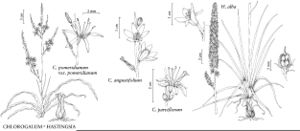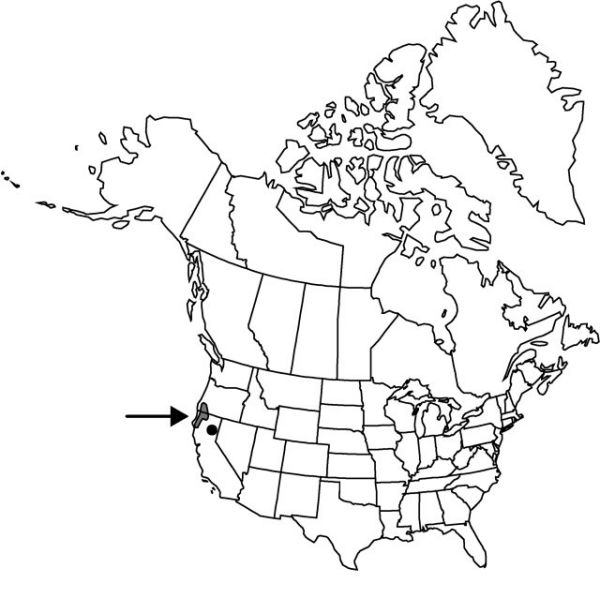Hastingsia alba
Proc. Amer. Acad. Arts 14: 242. 1879.
IllustratedEndemic
Basionym: Schoenolirion album Durand J. Acad. Nat. Sci. Philadelphia, ser. 2, 3: 103. 1855
Bulb ellipsoid, 26–56 × 17–31 mm, sometimes with blackish, fibrous tunic. Leaves (28–)35–41(–53) cm × 7–14 mm, mature plants with blackish, shriveled foliage persisting at base of scape; blade glaucous-green, aging to light green. Scape 40–89 cm, often with 1–3 ascending branches, 3–5 mm thick at base. Inflorescences: terminal raceme (5–)14–27(–40) cm; flowers (24–)44–51(–78) per 10 cm of raceme. Seeds dark gray-green to black, 4–6 mm. 2n = 52.
Phenology: Flowering Jun–Jul, fruiting late Jul–Sep.
Habitat: Serpentine, granite, and diorite sites, open rocky seepage areas with year-round water supply, bogs, wet meadows
Elevation: 500–2300 m
Discussion
At high elevations, Hastingsia alba is often stunted and has smaller bulbs, shorter scapes with shorter and narrower leaves, and spreading-rotate tepal tips.
Selected References
None.
Lower Taxa
None.

